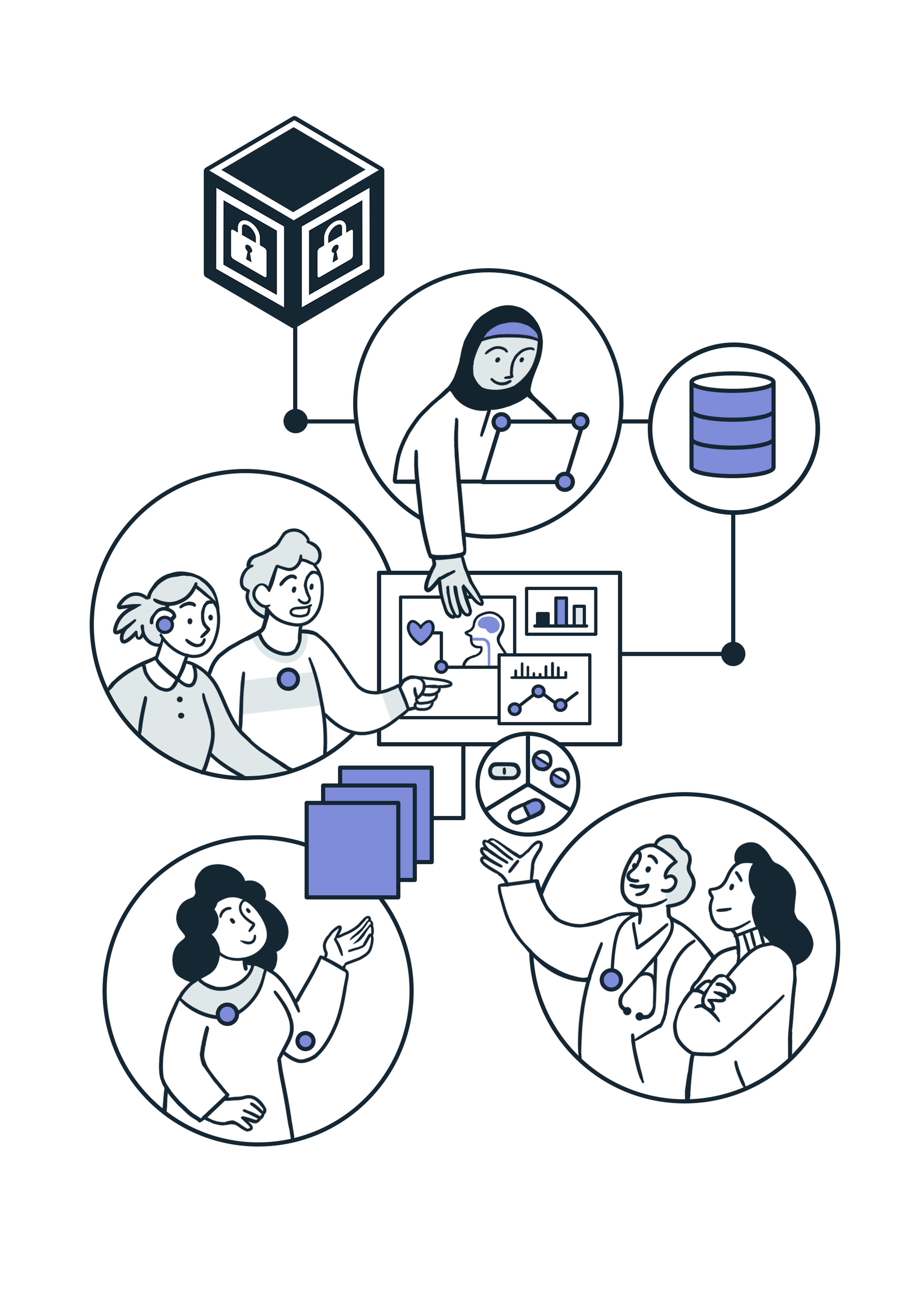Hosting Events with Members of the Public#
A guide for involving members of the public at research events.

Fig. 108 Collaborating with Members of the Public: Actively involving members of the public and experts with lived experience in the design, development, and delivery of projects can greately improve the quality and relevance of the research. This image was created by Scriberia for The AI for Multiple Long Term Conditions Research Support Facility community and is used under a CC-BY 4.0 licence for reuse. Zenodo. DOI 10.5281/zenodo.8082554.#
Summary#
This Chapter discusses planning and hosting events that are inclusive and accessible for people with lived experience and acts as a guide for how to design an inclusive event for all attendees.
It covers:
Motivation and Background#
This chapter is meant to serve as a resource to support and guide researchers, organisers, and community members with the tools to identify the opportunities and mitigate barriers in the organisation of events that involve and include members of the public, and in particular people with lived experience.
We refer to “people with lived experience” throughout this chapter as a way to recognize and acknowledge individuals who have direct personal knowledge, or firsthand experience of a particular situation that is relevant to the topic of a research-related event. For example, this could relate to a particular medical condition, disability, or other social condition. It is a term often used to emphasise the importance of including the perspectives and insights of those who have had direct experience. [Coa22, fHR21].
This chapter is focused in particular on how to make research events more inclusive and accessible to members of the public and people with lived experience who do not have experience or a background as a researcher, as they can face particular barriers to participation.
Many research projects are increasingly including members of the public in the research process. Within the realm of biomedical and care-related research, this is often referred to as “Public and Patient Involvement and Engagement” or “PPIE” which has a goal to actively involve people with the lived experience of a specific disability, situation, health condition, or experience in the research process. [UK23]. PPIE is done both to ensure that research is aligned with the interests of people affected by it, and to improve the quality of research by including lived knowledge and perspectives. As part of this involvement and engagement, researchers and research staff will need to plan events that are inclusive and accessible for people with lived experience, and delivered in a way that avoids presenting barriers to people with lived experience taking part equitably.
“Lived experience” as it is used within the research context can be a range of things such as a disability, long-term health condition, bereavement, having worked in a specific profession, or the lived experience of caring responsibilities. “Lived experience” is an expansive and inclusive term preferred by many patient and public representatives as it best reflects the diverse community of contributors and the expertise they have.
In the context of event planning, there are practices researchers and organizers can use to foster the participation of this diverse group of people.
Thus, considerations need to cover both the potential disability-related barriers experienced by your attendees as well as the barriers that would be experienced by your attendees with lived experiences such as parental responsibilities, cultural differences, or minority status.
This chapter focuses on the latter aspects, specific to involving people with lived experiences, for the more general and equally important considerations around accessibility – that affect participants regardless of whether they are members of the public or not, please refer to specific accessibility or access-centered resources.
Because both internal resources and the events you run can range in size - from small meetings to massive multi-day conferences - this chapter is not an exhaustive list and instead is meant to provide general guidance. It offers a starting point to adapt the suggestions made by this chapter to align your event with the needs of your specific community and attendees.
This chapter and its guidance have been built by the contributions of the Public and Patient Involvement and Engagement Community of Practice with the AI for Multiple Long Term Conditions Project project. This community consists of patients, clinicians, researchers, and members of the public with an expertise of living with multiple long term conditions.”